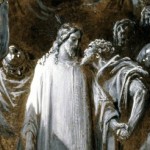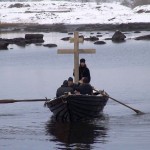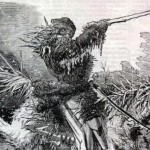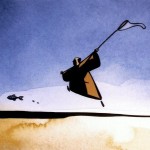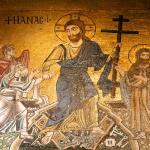The name “Tenebrae” — Latin for “shadows” or “darkness” — has been given because this Office is celebrated in the hours of darkness, formerly in the evening or just after midnight, now the early morning hours. There is an impressive ceremony, peculiar to this Office, which tends to perpetuate its name. There is placed in the sanctuary, near the altar, a large triangular candlestick holding fifteen candles. At the end of each psalm or canticle, one of these fifteen candles is extinguished, but the one which is placed at the top of the triangle is left lighted. During the singing of the Benedictus (the Canticle of Zachary at the end of Lauds), six other candles on the altar are also put out. Then the master of ceremonies takes the lighted candle from the triangle and holds it upon the altar while the choir repeats the antiphon after the canticle, after which she hides it behind the altar during the recitation of the Christus antiphon and final prayer. As soon as this prayer is finished, a noise is made with the seats of the stalls in the choir, which continues until the candle is brought from behind the altar, and shows, by its light, that the Office of Tenebrae is over. (SOURCE)
Don Carlo Gesualdo has long been famous for killing his wife and her lover, as well as for a disconcertingly large number of non-sacred activities. But it is for this sometimes unsettling, often strange, always moving work that I prefer to best remember and appreciate him. (A live version from NY’s TENET is available here, along with a pdf of the responsories themselves. And for more on the musical and liturgical tradition of Tenebrae, here’s a brief interview with Charles Cole, courtesy of today’s Son Rise Morning Show.)
Strictly speaking, these responsories were probably a bit more appropriate for late last night. Or for very, very early this morning. But they definitely fit with the overall mood, so I’m going to allow it. This once.
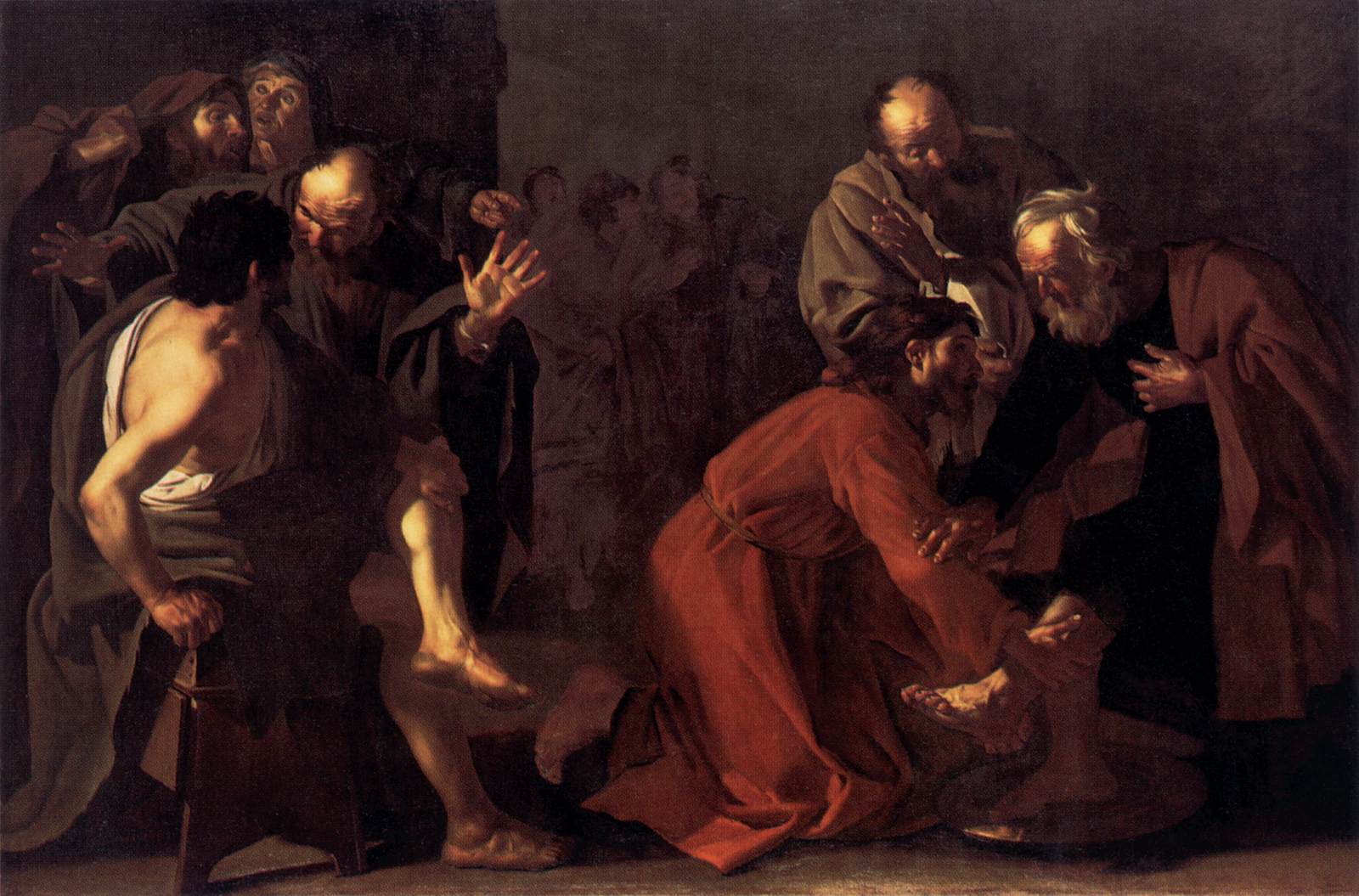 Attribution(s): “Christ Washing the Apostles’ Feet” by Dirck van Baburen (circa 1594/1595–1624) – Web Gallery of Art (Image, Info). Licensed under Public Domain via Wikimedia Commons.
Attribution(s): “Christ Washing the Apostles’ Feet” by Dirck van Baburen (circa 1594/1595–1624) – Web Gallery of Art (Image, Info). Licensed under Public Domain via Wikimedia Commons.

